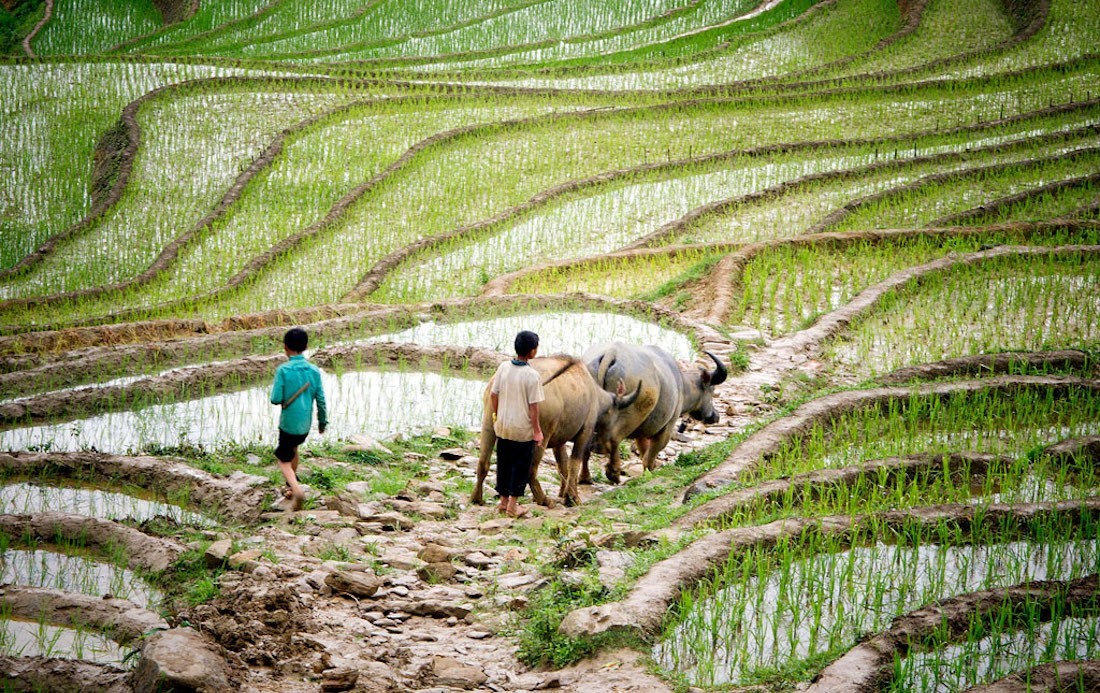Upped by $2 billion compared to what ministers of the six GMS countries agreed to in the action plan late last year.
Tag: GMS
$540m Mekong project endorsed
GMS Environment ministers endorsed a five-year environment agenda that includes more than $540 million worth of projects to spur green investments and increase environmental cooperation.
Pushing GMS food up the value chain
Conditions are ripe GMS to embrace sustainable agriculture and become a source of environmentally friendly produce.
Mekong countries to seek sustainable tourism by training Cultural Heritage Specialist Guides
Mekong officials will meet for the first time for training specialist guides and developing relevant policies for cultural heritage
Scientists study wildlife rangers, what motivates them?
GMS and other Asian wildlife rangers just need a job, and are not motivated by protecting our most iconic species—tigers, elephants, gorillas and many others.
Read more at: https://phys.org/news/2017-09-scientists-wildlife-rangers.html#jCp
Mekong Institute shifts its aid focus
The new focus on social assistance with knowledge training in GMS countries was a shift from economic aid, MI Chairman said at the Mekong Forum on “New Geo-economics: Reshaping the Future of the GMS?”
Scientists discover 163 new species in Greater Mekong region: WWF
A rainbow-headed snake and a dragon-like lizard are among 163 new species that scientists recently discovered in the Greater Mekong region, conservation group WWF said on Monday, adding rapid development in the area, from dams to mines, was threatening wildlife survival.
PDF REPORT Analysis on ADB Investments in the Greater Mekong – NGO Forum on ADB
Since 1992 the Asian Development Bank (ADB) initiated the Greater Mekong Sub-region (GMS) Program encompassing the five countries and parts of China. As of 2016, over USD 14 billion has been invested by the ADB. The GMS program is another flagship endeavor by ADB under the strategic pillar entitled “regional economic integration”. Furthermore the GMS Regional Investment Framework (RIF) 2013 – 2022 serves as the master plan for over 200 projects with an estimated investment of about USD 50 billion.1
Civil society-led impact studies on ADB funded GMS projects suggest that groups mostly dependent on natural resources bear the brunt of direct disempowerment from practices such as mining, logging, involuntary resettlement and road-building among others. Once removed from their rights of access to their customary resources, the ADB presupposes that affected communities will invariably integrate into new market-based economies. Most often than not, however this is far from the local reality.
China drives water cooperation with Mekong countries
China is more closely involved in cross-border cooperation on hydropower and water management after the six countries that share the Mekong River signed a landmark agreement late last year.
While more needs to be done between these countries to resolve disputes and encourage transparency over dam building and shared water management, the agreement signals a greater willingness to discuss areas of discord that have soured relations in the region in the past.
During their meeting in in China’s southern province of Yunnan in November 2015, the foreign ministers of China, Myanmar, Laos, Thailand, Cambodia, and Vietnam launched the Lancang-Mekong Cooperation Mechanism (LMCM), an initiative pitched at the November 2014 Summit Meeting between China and the Association of Southeast Asian Nations (ASEAN) in Naypyidaw, Myanmar.










